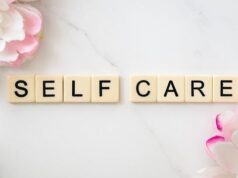In the swirling dance of romance, flings often emerge like shooting stars—brief, bright, and ultimately fleeting. These ephemeral connections can ignite intense feelings and excitement, making it all too easy to lose oneself in the moment. However, when the dust settles and the time comes to move on, many find themselves grappling with the challenge of letting go. Whether it was a whirlwind weekend or a summer adventure that turned into something deeper, the question remains: how do we disentangle ourselves from the remnants of a fleeting relationship? In this article, we will explore practical steps and insights to help navigate the emotional landscape of moving on from a fling, allowing you to embrace the future with clarity and renewed purpose.
Understanding the Nature of a Fling
In the realm of modern relationships, a fling represents a transient connection characterized by its lack of long-term commitment. Typically, individuals enter these arrangements with the understanding that the bond will not endure beyond a specific time frame. The thrill of a fling often stems from its casual nature, which allows both partners to enjoy each other’s company without the burdens of expectations or future plans. The absence of exclusivity and seriousness is what differentiates a fling from a traditional relationship, emphasizing spontaneity and pleasure over emotional depth.
Embracing the short-lived joy of a fling can provide excitement, but it also contains inherent risks, particularly when expectations evolve. When feelings deepen unexpectedly, one may find themselves grappling with confusion and heartache. Recognizing the signs of a fling—such as a lack of future-oriented discussions, limited emotional investment, and a focus on physical intimacy—can help navigate this volatile emotional landscape. It’s crucial to remain mindful of one’s own needs and feelings, ensuring that the experience remains enjoyable rather than leading to undue heartache when the fling reaches its inevitable conclusion.
Recognizing Your Emotions and Feelings
Understanding the nuances of your emotions and feelings is crucial when navigating the aftermath of a fling. Emotions often arise in response to external stimuli, providing immediate reactions that can feel overwhelming. For example, the excitement you felt during the fling may lead to feelings of disappointment or sadness as it comes to an end. Acknowledging these basic emotions can empower you to process them effectively. Identifying whether you’re feeling anger, regret, or even relief can help you dissect your emotional landscape. Pay attention to the physical sensations associated with these emotions; they often serve as indicators of deeper feelings that need your attention.
Once you have pinpointed your emotions, it’s essential to dive deeper into the feelings that stem from them. Feelings are your subjective interpretation of these emotions and can include a wide range of experiences. You might feel nostalgic about the good moments shared or isolated in your current state of loneliness. It’s important to allow yourself to feel these emotions and acknowledge their presence without judgment. Consider jotting down your emotions and feelings as they arise, creating a map of your emotional journey. This reflection can facilitate a clearer understanding of what you’re experiencing, allowing you to work through your emotions and ultimately move forward on your healing path.
Reflecting on the Experience: What You Learned
Engaging in a fling often serves as a mirror, reflecting truths about yourself and your desires that may have been previously obscured. Through this experience, you might have discovered the qualities that truly resonate with you, whether they be in terms of emotional connection, shared interests, or lifestyle choices. Consider the moments that excited you, but also those that left you feeling unfulfilled. This duality can provide insight into what you want from future relationships. You might find that you value honesty, seek a deeper connection, or perhaps desire someone who shares your adventurous spirit. Taking the time to acknowledge these preferences will empower you as you move forward.
In addition to personal revelations, the end of a fling can illuminate your coping mechanisms and emotional resilience. Reflecting on how you handled the ups and downs of this short-lived romance may reveal valuable lessons. Did you communicate openly, or did you hold back your feelings? Understanding your emotional responses can help you navigate future relationships with more clarity and intention. You might recognize areas for growth, such as improving your communication skills or learning to set boundaries. Each experience, regardless of its duration, contributes to your journey of self-discovery and personal growth, equipping you with tools to thrive in future romantic endeavors.
Creating Space for Healing
To navigate the emotional aftermath of a fleeting romance, it’s essential to create an environment conducive to healing. This involves cultivating a personal sanctuary—a space that feels safe and nurturing. Consider turning a corner of your home into a cozy retreat where you can retreat and reflect. Incorporating elements such as soft lighting, calming aromas from essential oils, and comfortable seating can significantly enhance your sense of peace. Additionally, surrounding yourself with inspiring visuals, like photographs or artworks that evoke positive memories, can help redirect your mindset towards gratitude and personal growth.
Within this space, allow yourself to engage in activities that promote self-care and reflection. Journaling your thoughts, meditating, or practicing gentle yoga can facilitate emotional release and clarity. It’s important to create a routine that includes mindfulness practices to allow yourself to process your feelings authentically. By setting intentions and dedicating time to both inner exploration and external self-care, you enable the emotional healing process to unfold naturally. Remember, creating a healing environment is not merely about finding space physically but also about nurturing your inner landscape as you move forward.
Establishing Healthy Boundaries
To move forward after a fleeting romantic encounter, it’s essential to establish boundaries that reinforce your emotional well-being. Begin by clearly identifying what behaviors or communications are acceptable and which ones are not. By doing this, you set a framework that protects you from potential heartache or confusion that may arise from lingering interactions. Consider the following strategies for establishing those limits:
- Communicate Directly: Be honest about your feelings and intentions.
- Limit Contact: Decide whether to take a break from all forms of communication.
- Define Your Space: Ensure your physical and emotional boundaries are respected.
Once you have set your boundaries, it’s important to enforce them consistently to maintain your emotional clarity. This requires self-awareness and strength, as you may be tempted to revisit old habits or slip back into familiar patterns. Reflect on your triggers and remind yourself why these boundaries are essential for your healing process. You might find these practices helpful:
- Journaling: Document your thoughts and feelings to gain clarity.
- Seek Support: Discuss your experiences with trusted friends or a therapist.
- Prioritize Self-Care: Engage in activities that rejuvenate and focus on your own well-being.
Redirecting Your Focus Towards Yourself
Shifting your attention inward can be a transformative step towards healing after a fling. Rather than dwelling on what was or what could have been, embracing self-care becomes crucial. Engage in activities that nurture your emotional well-being—consider journaling your thoughts to gain clarity, or immerse yourself in hobbies that you genuinely love. By prioritizing your interests and needs, you create a space for personal growth, allowing the lessons learned from your past experience to guide you forward. Make it a habit to schedule daily moments of reflection, giving yourself the opportunity to connect with your desires and aspirations.
Additionally, building healthy boundaries in your social interactions can strengthen your journey towards self-recovery. Limit contact with mutual friends or social circles that remind you of the fling, and ensure your environment fosters growth rather than hindrance. It’s essential to listen to your feelings and validate them; allowing yourself to experience the full range of emotions will facilitate a more profound understanding of your personal needs. Consider incorporating mindfulness practices, such as meditation or yoga, to enhance your focus on self-compassion and self-acceptance, creating a supportive inner dialog that encourages a positive outlook.
Engaging in New Activities and Hobbies
Moving on from a fleeting romance can be challenging, but diving into new activities and hobbies can provide a refreshing distraction that fosters personal growth. Engaging in different pastimes not only uplifts your mood but also allows you to rediscover your passions. Consider exploring options such as:
- Joining a sports team: This can help you stay physically active while meeting new people.
- Taking a cooking class: Experimenting in the kitchen can be a fun way to learn new skills and treat yourself to delicious meals.
- Volunteering: Helping others can bring a sense of fulfillment and connect you with your community.
- Starting a new craft or DIY project: Tapping into your creative side can be therapeutic and rewarding.
Not only do these activities keep your mind occupied, but they also serve as a reminder of your individuality. Each new experience can lead to opportunities for growth and self-discovery, helping to reconstruct your sense of identity outside of the short-lived fling. Embrace the excitement of trying something new; it can be the perfect remedy to heal the heart. Remember, the journey to finding joy again often begins with stepping outside your comfort zone.
Connecting with Supportive Friends and Family
When navigating the emotional landscape after a fling, having a network of supportive friends and family can be incredibly beneficial. These connections provide a safe space for you to express your feelings, share your thoughts, and seek advice. Engaging with empathetic individuals who genuinely care about your well-being can help you gain perspective and make sense of the situation. Consider reaching out to those who have been through similar experiences, as they can offer valuable insights and strategies for healing. Their understanding can remind you that you are not alone in this journey.
To strengthen these vital connections and ease the process of moving on, take proactive steps to engage with your support system. You might:
- Organize group outings to distract yourself and create new memories.
- Share your feelings openly during casual conversations or dedicated heart-to-heart sessions.
- Join activities together that foster shared interests, such as cooking, exercising, or attending events.
- Encourage your friends to provide you with playful challenges to shift your focus away from the past.
By fostering these connections with supportive friends and family, you’ll start to feel lighter and more empowered to move forward.
Practicing Mindfulness and Self-Care
In the journey of moving on from a fling, embracing mindfulness can be a powerful tool for emotional healing. By focusing on the present moment, you can cultivate an awareness that allows you to process your feelings without judgment. Incorporating practices like mindful breathing or meditation can help clear your mind and create space for self-reflection. Take time each day to sit quietly, observe your thoughts, and gently guide them back to your breath. This practice can reduce stress and promote a sense of calm, enabling you to better understand your emotions and reactions.
Beyond mindfulness, prioritizing self-care is essential during this transition. Engaging in activities that nurture your mind and body can significantly enhance your well-being. Consider the following strategies to incorporate into your routine:
- Physical activity: Engage in exercise like yoga or dancing to release endorphins.
- Creative outlets: Find joy in art, writing, or music to express your feelings.
- Social connections: Spend time with friends and loved ones who uplift you.
- Journaling: Write down your thoughts and emotions to gain clarity and closure.
Implementing these self-care practices will not only help you navigate your feelings but also empower you to emerge stronger and more resilient.
Exploring New Relationships at Your Own Pace
When it comes to exploring new relationships after a fling, it’s essential to take your time and listen to your own feelings. Rushing into something new can often lead to unresolved emotions from the past lingering, which can complicate the budding connection. Consider reflecting on what you truly want in a partner, and what have you learned from your previous experiences. This self-awareness can help pave the way for healthier interactions moving forward. Take the opportunity to enjoy the process of meeting new people, and allow yourself the freedom to say yes or no without pressure.
As you navigate this new chapter, focus on building connections that feel right for you. Engage in activities that bring you joy and introduce you to like-minded individuals. When you meet someone new, keep the following in mind:
- Be honest about your feelings: Authenticity is key to forming genuine connections.
- Communicate openly: Share your past experiences, but don’t dwell on them.
- Pace yourself: Allow the relationship to grow organically without the pressure of labels.
This way, you give yourself the chance to develop a meaningful bond, while also respecting your emotional journey.
Embracing Your Growth and Moving Forward
Getting over a fling requires you to embrace the experience as a stepping stone in your personal growth journey. Rather than dwelling on the fleeting moments, take time to reflect on what you learned about yourself and your desires. Use this opportunity to evaluate your feelings, recognizing that every experience shapes your understanding of relationships and personal needs. Acknowledge both the excitement and the lessons learned, allowing yourself to appreciate the highs while also recognizing the closure of this chapter.
As you move forward, focus on expanding your horizons and engaging in new experiences that enhance your sense of self. Consider activities that challenge you, whether it’s picking up a new hobby, meeting new people, or embarking on a personal project that excites you. By stepping outside your comfort zone, you not only distract yourself from lingering feelings but also cultivate resilience and openness to future possibilities. Remember, each small step you take fosters growth and paves the way for a more fulfilled version of yourself.
In Retrospect
moving on from a fling is all about self-discovery and growth. Embrace the lessons learned, as each experience shapes who you are. Allow yourself the space to heal and reflect, acknowledging that it’s perfectly okay to feel a mix of emotions. With time and self-compassion, you’ll find clarity and rediscover the joy in your own company. Remember, every ending is merely a new beginning waiting to unfold. Wishing you strength and serenity on your journey to finding peace and happiness beyond the fling.




